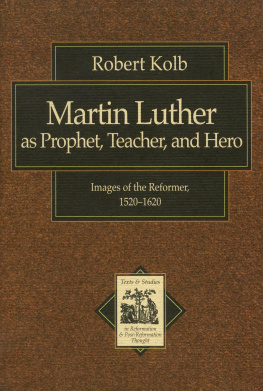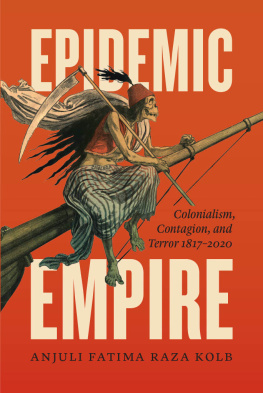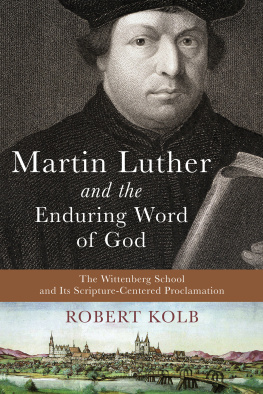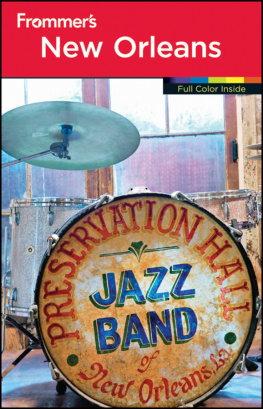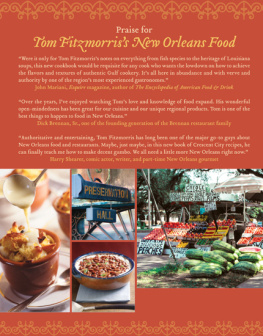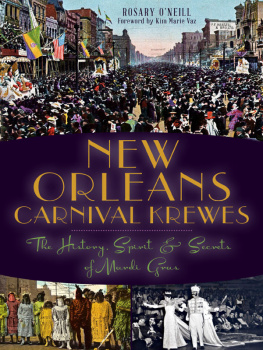NEW ORLEANS MEMORIES
New Orleans Memories
ONE WRITERS CITY
Carolyn Kolb

www.upress.state.ms.us
The University Press of Mississippi is a member
of the Association of American University Presses.
Copyright 2013 by University Press of Mississippi
All rights reserved
Manufactured in the United States of America
First printing 2013
Library of Congress Cataloging-in-Publication Data
Kolb, Carolyn, 1942
New Orleans memories : one writers city / Carolyn Kolb.
pages cm
Includes bibliographical references and index.
ISBN 978-1-61703-883-9 (cloth : alk. paper) ISBN 978-1-61703-884-6 (ebook) 1. New Orleans (La.)Description and travel. 2. New Orleans (La.)Social life and customs. 3. Kolb, Carolyn, 1942Homes and hauntsLouisianaNew Orleans. I. Title.
F379.N54K65 2013
976.335dc23 2013006724
British Library Cataloging-in-Publication Data available
TO MY FAMILY
Ken, Pherabe, Kenneth, Sarah, and Vivi
Contents
PART ONE
Food
PART TWO
Mardi Gras
PART THREE
Literature
PART FOUR
Music
Acknowledgments
This book is a compendium of my own stories and those of many people who were kind enough to share theirs, for which I am grateful. A word of appreciation is due to Errol Laborde, of Renaissance Publishing, L.L.C., for his encouragement and for permission to use my New Orleans magazine columns here. I want to express my gratitude to Craig Gill, Katie Keene, Anne Stascavage, three anonymous readers, copy editor Carol Cox, and the rest of the good folks at University Press of Mississippi for their faith in me. I am also thankful to the many librarians who helped with my research at Tulane University (Leon Miller, Bruce Raeburn, Susan Tucker, Lynn Abbott, Sean Benjamin, and Ann Case); Loyola University (Art Carpenter); the University of New Orleans (Florence Jumonville); the New Orleans Public Library (Irene Wainwright); and the Historic New Orleans Collection (John Magill). And my friends who were always ready with ideas, including (but not limited to) Stuart and Olivia Bamforth, Walter Carroll, Judy LaBorde, Nell Nolan, Henri Schindler, Gasper and Mel Schiro, Constance Snow, Jack Stewart, Judy Whann, Justin Winston, Kit Wisdom, and Penny Wisdom. And, of course, thanks to my husband and to the rest of my family, who have always been an inspiration and a wonderful audience.
Introduction
Memories of New Orleans seep through a special atmosphere of the senses. In this city, even the air is different. It hangs about you, lank and sultry. When you see things through this air, they are changed in some way.
What I recall about living here, what I have seen with my eyes, heard with my ears, felt, tasted, and caught the scent of, I can pass along. And I can pass along the stories of others, because we, each of us, have our own stories, and they are precious.
I have been as truthful in this writing as I can, because I have been entrusted with stories.
When things fail, when the lights go out and the roof caves in and the water rises, all that remains, ultimately, is the story.
This work is grounded in the essays that appeared monthly as Chronicles of Recent History in New Orleans magazine. Renaissance Publishing, L.L.C., and editor and publisher Errol Laborde made all this possible. I am very grateful for this support, and for the permission to publish this work. I also thank the Louisiana Endowment for the Humanities, the magazine Louisiana Cultural Vistas, and Dr. Michael Sartisky, editor-in-chief, and David Johnson, editor, for publishing my essay on Frances Parkinson Keyes and allowing its use here.
In the process of writing, I pulled topics from my own memories, and I asked friends for ideas. I took suggestions from anyone willing to make one. When I was curious about something, I found experts and asked questions. Lots of questions. My family thinks I invented the ideal job for myself with those monthly essays: I get to talk to my friends, meet new people, ask nosey questions, and write whatever I want. I enjoy it immensely.
Besides conducting interviews, I did research. I hold a doctorate in urban history from the University of New Orleans, and I teach Louisiana history at Tulane University. In this writing, I did not take a scholarly approach. I dont lecture. I tell stories. And these stories are true ones. However, I also hope that teachers and students interested in New Orleans will find this book a useful tool, and perhaps it can be a fruitful source for their own work. (I have included bibliographies of booksnot all of them academicI use and enjoy.) I know that Orleanians will find many of their own memories on these pages, and yet there is so much general interest in this fascinating city that any reader will find pleasure.
The resulting writings reflect the pattern of the city. Since the devastation of Hurricane Katrina in 2005, some of these things remembered will never return. Some of the people whose stories I tell are no longer with us. It is important to me that they not be forgotten. We can honor them by sharing and enjoying their stories. Taken together, stitched into sections and connected by topics, the stories form a fabric of recollections, something we can wrap around ourselves and cherish.
I take all this personally. I am a native of New Orleans, as is my husband and both of our children. While I was born here, went to college here, and have lived here with my New Orleans husband since then, I spent the years from when I was four years old through high school in Bogalusa, Louisiana, just across Lake Pontchartrain. My fathers family was in Tangipahoa Parish, also on the North Shore. But my maternal grandmother and some cousins lived in New Orleans, and the city is where we came every other weekend, and where I got my shoes, and shopped, and went out to restaurants and had adventures. I am, perhaps, that rare New Orleans native who also loves it as a tourist would: not only as a workaday home, but also as a destination with exotic appeal.
Besides providing information on a variety of New Orleans topics, this work falls loosely into the category of what journalists call feature stories. Features are not hard news, but the same criteria should be used by the writer in producing both. You interview sources, you do research, you check facts, and you write it all as clearly as possible, while being true to your own style of expression and use of words.
New Orleans has always had an abundance of topics for features, and some fine writers have worked here in this genre: William Faulkner, Lafcadio Hearn, Lyle Saxon, Roark Bradford are among the past masters in the field, and there are numerous others.
For myself, I can only say that I am privileged to be a New Orleanian and a feature writer. I hope that my work brings you both knowledge and enjoyment.
PART ONE
Food
New Orleans has given the American palate a precious gift: a cuisine that has a universal appeal. There are so many good local recipes, and so much available as raw ingredients, that it comes as no surprise that New Orleans is a city obsessed with eating.
Beginning in the summer of 2011, Orleanians could sign up at the Crescent City Farmers Market for the annual locavore challenge. Could you go for a month eating only local items, things grown in the region? This is made a little easier since both sugar (from sugarcane grown and refined here) and salt (from the salt domes of Avery Island near New Iberia, Louisiana) are on the list. Yes, it is possible. And it is possible to have interesting food, fresh vegetables, seafood, dairy products, and meats. In fact, everything it takes, both to sustain life and to dine with flair, is available to Orleanians. There is a website at nolalocavore.org with details on how to participateit is an annual event now.
Next page

